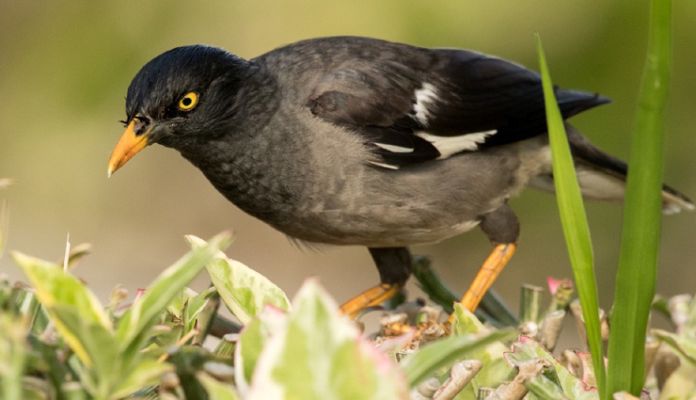One of the things, I am often preoccupied by is the Idea of a Tribe. How are tribes and communities formed, why do they from, how do they stick together, how do they move as one etc. In conversations with three different clients, recently, I noticed there one common theme is “communication” of the leader. It is as simple and as misleading as it sounds.
The “Context” by and large for these Leaders is
- New to the Role
- They have to “Communicate” with different stakeholders on a large scale
- There is an expectation that they drive, inspirationally “Everyone towards ONE common vision”
This is not too new from the ask say, even ten years ago, and yet the one big difference is the Pandemic. The pandemic has moved the “complexity” to a whole different level. And so the response cannot be same either.
There is ambiguity, uncertainty and even more need for “community”, to stick together.
One just has to look at some of the popular posts on LinkedIn to see the “isolation” and work from home is NOT working for many.
And so, ‘your communication has to improve‘, as a feedback can be quite hard hitting, understandably, like in the case just recently. My goto often is Nature for solutions that are practical, sustainable, insightful and already implemented.
As I was sitting and reflecting, I came upon this video of Bird clouds seen in Bangalore skies recently. Where birds fly in unison and changed shapes dynamically mid-air – large enough to be seen and recorded. Awesome enough to gape and wonder – “How on earth do they do it?”
My preoccupied thought – How do the birds Communicate, move together, adapt and respond so dynamically to change, and yet manage to make it look beautiful, elegant and effortless– Everything while in still flying.
Certainly seems like the ask of many organizations and leaders.
As I started to ponder while listening to the birds outside my window. One consistent sound was of the Myna. She is the famous “singing bird” because it does sound like she is mimicking and singing. I swear it felt like she was answering my unasked questions.
Ok, so I looked up Myna. And I was certainly rewarded for my curiosity.
Myna our very own, is also known as “Starling” – ahhhh…I just love the sound of that.
Starlings are small to medium-sized passerine birds in the family Sturnidae. The name “Sturnidae” comes from the Latin word for starling, sturnus. Many Asian species, particularly the larger ones, are called mynas.
Connecting back to the Video, these massive aerial stunts, pulled off by the birds are called Murmurations. And they’re made up of hundreds, to hundreds of thousands of tiny birds called,..yes..Starlings or Myna. I would have never imagined.

Watching a murmuration of starlings in mid-air — that’s what the flocking, community behaviour is called, is to experience first hand the power and mystery of the natural world.
The sheer spatial scale of something that is moving very rapidly, responding real time to stimuli, which of course we are utterly unable to do, and the visual patterning that occurs when a lot of individuals are doing the same thing is really mesmerising. They move as ONE Unit.
All of us at some point have tried to do this synchronisation, whether it was a school dance, or wedding sangeet, teams trying to pull off a project together, or just crossing the road as a group. We all know just how difficult and frustrating it is.
The frustration increases in direct proportion to the numbers, as we try to “control” it.
In the 1930s, famed ornithologist Edmund Selous suggested that birds moving in murmurations were using some sort of telepathy to transmit their flying intentions. “They must think collectively, all at the same time”, he wrote in his book, “Thought-Transference (or What?) in Birds “
But it was not so. Thank god.
In the 1950s, scientists studying insects and fish and other collective animal behavior posited that group movement is more of a stunningly fast response to others in the flock rather than some innate mind-reading ability or a command from the group leader
In his essay, John Donovan states, that, In 2015 paper published in the journal Proceedings of the National Academy of Sciences wrote. “There’s two ways that you can elicit large group behaviour. You can have the top-down control, where you have some kind of leadership, OR some kind of top-down mechanism.“.
The distinction between Control and Mechanism is Highlighted.
Think of a music concert, you have the star in the front and he/she starts clapping hands, and the whole stadium starts clapping. And, now visualize an impromptu dance session, where one “Enthu-cutlet”, it’s colloquial term for an over enthusiastic person, sometimes like me, gets up and pulls a couple of people, who in turn pull the others and so on.
These Murmurations are actually self-organized, meaning that it’s the individual’s little behavioural rules that make it scale up to the large group.
But, Why Murmurations – Why do these Birds do all this Song and Dance, I wondered.

Well, They do that for 3 important reasons, not dissimilar to human beings, especially in organizations.
- To share information about food – Sustenance
- To keep warm in long flights – Scale
- To keep safe from predator attacks. – Survival
In order to understand this behavior, we have to go from the local scale, what is the individual doing, what are the rules that the individual is following?, to the global scale; what is the outcome?”
Connecting Individual to collective and local to Global scale. Yes .. that started to make sense.
What a team of engineers and physicists from Princeton found out was, In a flock with 1,200 birds, it is clear that not every bird will be able to keep track of the other 1,199 birds, ofcourse , but we think and expect otherwise in organizations
An important question is ‘Who or what is keeping track of whom and HOW.
I discovered three things. I love three’s
One: Magic number is Seven
Turns out, the Starlings don’t have to manage or communicate with all 1199. The just have to do that with the seven others, immediately around them. Who in turn to that with the 7 around them and so on.
Considering all these little groups of seven touch on other individuals and groups of seven, twists and turns quickly spread. And from that, a whole murmuration moves.
Two : Critical transitions
The system soon turns from a set of simple seven to a complex adaptive system and this large system moves because of a law of physics called “Critical transitions”
Critical transitions are abrupt shifts in the state of ecosystems, the climate, financial systems or other complex dynamical systems that may occur when changing conditions pass a critical or bifurcation point. Recovery from such shifts may require more than a simple return to the conditions at which a transition occurred, a phenomenon called hysteresis, which simply means studying patterns from History.
We are, in the post pandemics at a Critical transition juncture. Things are not going back. They never really did. We have to move forward learning from the past. And we have to adapt.
Three : Scale free correlation
The change in the behavioural state of one bird, or human, affects and is affected by that of all other in the group, no matter how large the group is, this is a tribe behaviour, stated Giorgio Parisi, a theoretical physicist with the University of Rome, who lead a research team looking into the amazing movement of starlings and published a paper in the Proceedings of the National Academy of Sciences in 2010.
Scale-free correlations provide each member with an effective perception range much larger than the direct individual interaction range, thus enhancing global response to perturbations.
Wow !!! So in a Gist applying these insights..
When there is a predator or danger or a food sighting. The One bird who “sees” it takes action and moves. Influencing it’s seven neighbours – and others follow. No question asked. Every bird is “empowered” to see and take decisions. And hence the “Leadership is Fluid” – there is no One leader. And everyone is a leader of that ONE response movement. This in Nature is not a management funda but a lived reality.
When the “Critical transition” point is reached – things will look as if they are “dramatically changing” suddenly, and we may react strongly in opposition wanting to keep things the same– but to know they are not suddenly changing.. It just means somewhere in the cloud things have started to move. Murmurations are happening. Perhaps we need to look out for “murmurs” and pay attention to them.
Maybe it’s time to pay attention to the fact that, Individual brilliance is great, but in a system, as a tribe – response time and social skills take precedence . Simply put, if a Leader is individually skilled and amazing but not good at communicating with others, it won’t fly. Pun intended.
One does not really have to think and worry and get overwhelmed by the scale. But really operate on a fractal of 7, in order to perceive and influence. The rest will be impacted – because the rest are in a system anyway. Perhaps the secret to handle complexity is keep thing simple.
Perhaps the solution to any large scale “Movement. These three simple principles.
Anyone can lead from anywhere
One Simple Action at a time
Focus on communicating with the seven neighbours
What is fascinating about all this is, It’s not just Science there is also the Art in Starlings.
There is a really endearing story of Mozart and his pet Starling.
For about three years the composer Wolfgang Amadeus Mozart kept a pet starling. The music Mozart jotted down in the book is fairly close to the opening bars of the third movement of his Piano Concerto No. which Mozart had completed a few weeks earlier. Presumably Mozart taught the bird to sing this tune in the pet store that he bought it from. The anecdote also talk about the funeral commemorations Mozart provided for it, and as an example of the composer’s affection for it.
Starlings do have a lot to teach us about music, magic, science and practical manoeuvring of complex systems. And how to, not only make it work but make it work elegantly beautifully and all the while still in flight. This is the very ask of Leaders, in any context.
I feel I have found my solutions.
Perhaps we need to spend more time in looking at and learning from the birds.
Staring out of the window and listening to birds is certainly underrated.
Mozart at the burial of his pet Starling, recited a poem he had composed for the occasion, A Starling:
Here lies a dear fool
A little starling; in the prime
Of his brief time.
He must feel death’s bitter pain.
My heart is riven
Thinking of him.
Reader, shed a tear as well.
He was not bad
But frisky and bright.
Underneath he was a wag,
No one would deny;
And I would say for sure
That now he is above.
In his friendly way
He will be praising me.
Yet unaware, I’d say
That he’s alive no more
To thank me for this score.



4 Comments